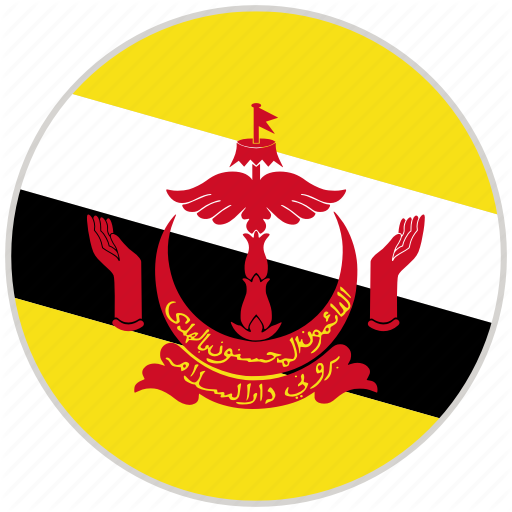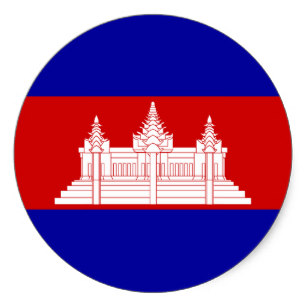Network of East Asian Think-tanks (NEAT)
Memorandum No. 13
I. Introduction
The Network of East Asia Think Tanks (NEAT) held its 25th NEAT Country Coordinators Meeting (CCM) and the 14th NEAT Annual Conference (AC) in Bangkok, Thailand on 28th - 29th July 2016. Participants were 43 representatives from ASEAN Plus Three (APT) countries.
NEAT reaffirms that the goal of community building in East Asia is to promote the welfare and well-being of its people by realising the East Asian Vision of Peace, Prosperity, and Progress. To promote peace and prosperity in the region, the East Asia community building process is to base on universal values, including good governance, the rule of law, democracy, human rights, and international laws and norms. Member countries should commit to further intensify and expand these values, laws and norms in all areas of cooperation, including cross-cutting issues such as connectivity and narrowing the development divide. In addition, the process must address emerging challenges in the areas of traditional and non-traditional security to ensure regional stability.
II. NEAT Activities in 2016
2016, NEAT organized two Country Coordinators Meetings (CCM), one Annual Conference, and four Working Groups (WG) on East Asia Economic Community (NEAT China), Regional Health (NEAT Japan), Institutional Sustainability (NEAT Korea) and Irregular Migration (NEAT Thailand). The detail appears in Annex. NEAT wishes to acknowledge and thank the respective NEAT member committees, supporters and participants for their highly valued efforts and contributions.
III. Recommendations
Based on the 24th and 25th NEAT CCM and working groups activities in 2016, NEAT respectfully submits recommendation for the APT leaders’ consideration in three areas:
1. Crisis Management in ASEAN Plus Three Countries
Enhanced cooperation and interaction among APT countries significantly fosters political, economic, and social development in each individual country and the region as a whole. Nevertheless, new challenges, such as natural disaster, migration and human rights, and epidemic have emerged. They have a potential to evolve into crises. To address these issues, NEAT has identified two existing challenges, i.e. irregular migration and issues relating to public health.
a. Irregular Migration
Although the issue of irregular migration is not new to APT, member countries have not recognized it as a potential source of crisis. Irregular maritime movements and loss of life at sea have significantly increased. These worsen people-smuggling and human-trafficking, refugee and statelessness, and forced labor and human right situations. In addition, it intensifies issues of international crime in the region. Unless irregular migration is properly and collectively managed, it will have permanent negative impacts on political, economic, and social development of each member country and the region as a whole. To address these issues, NEAT would like to propose the following recommendations:
i. To adopt comprehensive and appropriate legal frameworks which combine preventive, protective, and prosecutorial measures in tackling issues of irregular migration.
ii. To actively and seriously engage in discussions on migration at regional forums, including ASEAN, ASEAN Region Forum, the East Asia Summit, in addition to the Bali Process.
iii. To develop a comprehensive regional data center of migrant workers who work in APT countries.
iv. To enhance regional collaboration among APT countries regarding migrants in general. This can be done through the APT Migration Network where the participation of government officials, academics and migrants themselves becomes crucial to help tackle migrant-related problems.
v. To establish workable APT migrant welfare measures in order to guarantee the social and human security of migrant workers.
b. Enhancement of Public Health and Unviersal Health Coverage
Due to rapid economic development and increasing people mobility, diffusion of new types of communicable and non-communicable diseases have emerged as one of the serious issues in East Asia. This has led to drastic changes in regional disease structures and epidemic vulnerability taking place in line with global trends. Therefore, it is necessary for APT countries to jointly promote comprehensive management and cooperation in the enhancement of public health in the region. The recommendations are as follows:
i. To strengthen health care systems and universal health coverage so as to reduce health care inequities and promote sustainable universal health coverage. It should be done for each component of health care system including financing, governance, and human resource development.
ii. To jointly promote health care to prevent and detect both communicable and non-communicable diseases at early stages.
iii. To establish a cooperation framework and cross-sectoral information sharing platform in the areas of public health and health system.
iv. To promote the utilization of health data and improve its quality in collaboration with APT countries as well as other stakeholders, such as international organizations, Non-Governmental Organizations, and communities. This aims to develop and expand health database into “big data” in each country, and enhance data management and analysis capability.
v. To strengthen health services research and establish specialists networks in East Asia.
vi. To develop human resources for public health towards evidence-based health policy.
vi. To develop human resources for public health towards evidence-based health policy.
2. The East Asia Economic Comunity (EAEC) Building
The most noteworthy opportunity for East Asia is the new round of global economic restructuring characterised by the transfer of manufacturing industries. In order to build an East Asian Economic Community (EAEC), it is vital to upgrade each member’s position in the regional production network. Additionally, it allows APT countries to better integrate themselves into the regional consumption loop for a more balanced, inclusive, and economically resilient region. To enhance the EAEC-building process, key principles in regional cooperation should be valued and adhered to, including ASEAN Centrality, APT as the main vehicle of regional development, and open regionalism. NEAT recommendations are as follows:
a. To developn an EAEC Blueprint by designating a High Level Task Force (HLTF) to specify the outcomes to be achieved by either 2020 or 2025 (or a two-phase arrangement).
b. To strenthen ASEAN Centrality:
i. Improve its competence and capacity in regional trade agreement negotiations for deeper regional integration.
ii. Set a clear goal of higher level of commitments for the Regional Comprehensive Economic Partnership (RCEP) negotiations while leaving enough flexibility to the least-developed members.
iii. China, Japan, and Korea should stand and work together to provide strong support for the realization of the ASEAN Economic Community and ASEAN capacity-building, especially human resource development in ASEAN member states. The two most important areas shall be regional connectivity and narrowing of the development gap.
c. To better utilise the existing cooperation frameworks and mechanisms.
d. To conclude the Cina - Japan - Korea Free Trade Agreement (CKFTA) and RCEP negotiations as soon as possible.
e. To Promote All-round Functional Cooperation:
i. Improve regional connectivity. Assistance from Japan, China and Korea, Asian Development Bank (ADB), Asia infrastructure Investment Bank (AIIB) as well as the Silk Road Fund, will provide necessary financial support for the execution of the Master Plan on ASEAN Connectivity (MPAC). The “Belt and Road Initiative” can facilitate and complement the MPAC.
ii. Promote the implementation of the Trade Facilitation Agreement.
iii. Deepen regional financial cooperation. Further eliminate International Monetary Fund (IMF) conditionality for the Chiang Mai Initiative Multilateralisation (CMIM) by further raise the de-linked portion to 40% or even higher.
iv. Narrow the development gap. Further investment and cooperation shall be promoted in poverty reduction, industrial capacity improvement and human resources development.
3. NEAT Sustainability and Institutionalisation
To support the APT towards the development of East Asian Community, NEAT needs to strengthen its function by enchaining institutional capacity to ensure sustainability of its organizational development and to contribute to the East Asian integration. The recommendations are:
a. To establish a NEAT secretariat by utilizing the potential cooperation funds and make modifications on NEAT operations.
b. To encourage NEAT members to co-host working group meetings based on agreements of interested countries.
c. To adopt a chairmanship rotation system of the member committees to safeguard stable participation, enhance legitimacy, and cover wider variety of regional issues.
d. To involve the APT Senior Official of the hosting country and representatives from the ASEAN Secretariat in the NEAT CCM and Annual Conference, so as to enhance institutional connectivity between Track I and Track II diplomacy.
e. To invite NEAT representative to important Track I and Track II regional forums, particularly the APT, ARF and East Asia Forum and to strengthen close communications with SOM+3, DG+3, and the APT unit at the ASEAN Secretariat.
f. To fully utilize available funds from domestic, regional, and international sources, and to develop partnership with private sector actively.
The details of NEAT Activities in 2016 and recommendations from each NEAT working group are appears in Annex.
IV. Conclusion
NEAT greatly appreciates the serious consideration of the APT SOM, Ministers and Leaders to the recommendations in this Memorandum, and welcome opportunities to interact further with decision-makers on the contents. We pledge our continued support to build a vibrant and thriving East Asian community and, under the chairmanship of NEAT Korea, look forward to making greater contributions to the region as the APT marks its 20th anniversary in 2017.
ANNEX
I. NEAT WORKING GROUP ACTIVITIES IN 2016
In 2016, NEAT organised four Working Groups (WG. They are:
a. The first WG on “Migration”, sponsored by NEAT Thailand, that had the workshop on 10th June 2016 in Bangkok, Thailand.
b. The second WG is on “Enhancement of Regional Health in East Asia with Special Reference to the Public Health and Universal Health”, sponsored by NEAT Japan. The meeting was held in Tokyo, Japan on 5th - 6th July 2016.
c. The third WG on “The Road towards the East Asia Economic Community (EAEC) 2020”, sponsored by NEAT China. The workshop was organised in Beijing China, on 1st July 2016.
d. The fourth WG is on “Institutional Sustainability of NEAT: Towards the East Asian Community”. NEAT Korea, as the sponsor, conducted the meeting on 24th June 2016 in Seoul, Korea.
II. WORKING GROUPS RECOMMENDATIONS
a. Migration
Although the irregular migration covers various aspects, NEAT focuses on the immediate issues of labour migration and trafficking and forced migration. These issues need to be recognised and managed by the APT Leaders. The WG recommends that:
Labour Migration and Trafficing
i. To adopt comprehensive and appropriate legal frameworks which combine preventive, protective, and prosecutorial measures in tackling the issues of irregular migration.
ii. To actively and seriously engage in a discussion on migration at regional forums, such as ASEAN, using the Bali Process.
iii. To develop a comprehensive regional data center of migrant workers who have worked in APT countries.
iv. To enhance regional collaboration among APT countries regarding migrants. This can be done through the APT Migration Network where the participation of government officials, academics and migrants themselves becomes crucial to help tackle migrant-related problems.
v. For all AMS to ratify the ASEAN Anti-Trafficking Convention and making the national laws in line with regional and international standards.
vi. To establish workable APT migrant welfare measures in order to guarantee the social and human security of migrant workers.
vii. MOU regarding labor protection among ASEAN countries. Accelerating the process of drafting an ASEAN legally binding Instrument.
Forced Migration
i. Implement status determination if not by countries concerned, UNHCR should be enabled to do so in a timely manner;
ii. Closer cooperation between source countries and the countries of transit/destination to enable legal and voluntary take-backs of those that do not qualify for refugee status. Apart from bilateral government-to-government protocols, this should be accompanied by social development projects in source countries, possibly with ASEAN Plus Three assistance.
iii. Signatories of the 1951 Refugee Convention and 1967 Protocol must be encouraged to measure up to their international obligations in terms of resettlement and mutual assistance. For this purpose, ASEAN and other Asian countries should collectively draft a resolution in the United Nations and engage in diplomatic overtures with recipient countries.
iv. Countries which are facing labour shortage such as Brunei, Malaysia and Thailand can offer work rights to those that have acquired refugee status. Important to note that the offer of work rights, however, are not tantamount to naturalisation and more permanent solutions must be sought.
v. Putting in place a system of registration which would be clearly advantageous from a national security point of view. A regional data centre should be considered and exchange of information should be strengthened.
Mechanisms
i. Make full use of existing structures, such as forums like ASEAN and the Bali Process. Utilising existing frameworks will ensure that, generally, countries will be in a (much) better situation to broker more predictable and effective responses, and take preventative action.
ii. Setting up an overall mechanism to facilitate and improve maritime search and rescue in the region. The focus of addressing forced migration should, first and foremost, be on the humanitarian protection of refugees.
iii. A regional monitoring and protection mechanism on migration. This multilateral mechanism also has to respond to regional crisis and seek for regional solutions.
iv. Addressing issue of citizenship which is becoming a trans-border issue. Lack of citizenship is finally a time bomb for all societies and could be a threat to national security. Birth registration is one of the most important measures to prevent statelessness.
v. A Forum for Policy Dialogue between Track II and the ASEAN leaders in order to come up with concrete recommendations.
vi. Sharing good practices of law enforcement and legal support between APT.
b. Enhancement of Regional Health in East Asia with Special Reference to the Public Health and Universal Health Coverage
Based on the discussion in the three topics; 1) Trend on Public Health in the 21th Century, 2) Promotion of Public Health in the Age of Universal Health Coverage in East Asia, and 3) How to Further Enhance Regional Health in East Asia, it deems necessary for the APT Leaders to consider putting in place the following recommendations:
i. Strengthen health systems in East Asian countries to enhance regional health, reduce health inequities, and promote health and achieve/sustain universal health coverage. It should be done for each component of health system including financing, governance and human resource with appropriate transferability.
ii. Seek the possibility of financing public health facilities either from the viewpoint of social development program at national level, or from that of basic infrastructure development program at regional level.
iii. Jointly advocate for the need of policy and program support among health and non-health sectors to address social determinants of health that have strong impact on the regional health priorities.
iv. Jointly promote health among East Asian countries for preventing and detecting both communicable and non-communicable diseases at early stages, with equitable allocation of health resources, as well as to cope with the aging society, eventually, if possible, through establishment of a regional center or its equivalent under APT framework.
v. Establish a framework of cooperation and cross-sectoral information sharing among the East-Asian countries in the areas of public health and health system.
vi. Enhance utilization of health data in collaboration with East Asian countries as well as other stakeholders such as international organizations, NGOs and communities. To improve abilities of data collection, to improve quality of data, to develop and expand health database into 'big data' in each country, and to enhance capability of data management and analysis.
vii. Strengthen health services research networks among research institutions in East Asia, and build a network of health services research specialists, eventually, if possible, through establishment of a regional committee or its equivalent under APT framework.
viii. Develop human resources for public health and health services research towards evidence-based health policy.
c. The Road towards the East Asia Economic Community (EAEC) 2020
Apart from efforts on institutionalization of regional integration (such as the RCEP and the CJKFTA), East Asia should still give high priority to functional cooperation focusing on the following areas.
i. Improve regional connectivity. In this regard, the development assistance from the Plus Three countries, the ADB, the AIIB as well as the Silk Road Fund, will provide much needed financial support for the execution of the Master Plan on ASEAN Connectivity (MPAC). Especially, the “Belt and Road Initiative” shares striking similarities with the MPAC in envisaging transport connectivity as a way to bring participating countries closer to one another and to facilitate better access to trade, investment and people-to-people exchanges. Hence, the two can complement one another very well and produce effective and efficient cooperation in both hard and soft connectivity.
ii. Promote the ramification and implementation of the WTO’s TFA as soon as possible. As the first multilateral trade agreement adopted since the conclusion of Uruguay Round in 1994, the Trade Facilitation Agreement (TFA) represents a landmark achievement for the WTO. According to World Trade Report 2015, full implementation of the TFA will reduce global trade costs by an average of 14.3 per cent and is expected to add around 2.7 per cent per year to world export growth and more than half a per cent per year to world GDP growth. Developing countries have the most to gain from swift and full implementation of the TFA, as both their exports and GDP growth will increase at higher rates than those of developed countries. Taking open regionalism as its doctrine, East Asia welcomes any achievement in the WTO. What’s more, trade facilitation provisions in the WTO and in the AEC and even the EAEC almost converge.
iii. Deepen regional financial cooperation. In order to make the CMIM a more effectively-functioning financial safety net within Asia’s regional financial architecture, it is quite necessary to further eliminate IMF conditionality by further raising the de-linked portion to 40% or even higher. In the area of regional development finance, more channels for financing development projects should be encouraged. At the same time, collaboration between the existing institutions such as the WB, the ADB, the AIIB as well as the BRICSDB, should also be encouraged to contribute to the region’s development projects, especially infrastructure and environmental projects. In the area of regional financial system stability, the AMRO, as a regional macroeconomic surveillance unit of the CMIM, urgently needs to be strengthened in interior governance structure and its regional supervision function.
iv. Narrow the development gap. Equitable economic development and the narrowing down of the development gap in East Asia are necessary for regional peace, stability, and the long-term goal of an East Asia community. In order to achieve a balanced growth, APT countries need to further cooperate in poverty reduction, industrial capacity improvement and human resources development in less-developed countries by sharing expertise and technical know-how and promoting investment in a responsible manner. In order to ensure the stability of the supply of food in the region, the EAVG II’s proposal on expanding the coverage of the APT Emergency Rice Reserve (APTERR) to include other staple food in times of emergency in the region should also be supported.
d. Institutional Sustainability of NEAT: Towards the East Asian Community
Against the backdrop of a series of profound and complex changes of regional and global environments, NEAT is at a crossroad as it has to cope with such a new situation. Fundamentally, NEAT should strengthen its function by enhancing institutional capacity to ensure the sustainability of both its organizational development and contributions to East Asian integration. Through the discussions of the working group on “Institutional Sustainability of NEAT: Towards the East Asian Community”, participants collected and suggested policy recommendations listed below.
i. Establish the NEAT secretariat. It is agreed that NEAT need to make some modifications on its operation mode to adapt itself to the evolving regional environment. In addition, participants strongly recommend the establishment of the NEAT secretariat that can serve as a coordinator covering communication, documentation, management of official NEAT website, and other related works.
ii. Second, improve the chairmanship system. For those member countries that could not host Working Group meetings, it is encouraged to employ the method of co-hosting at present stage upon agreement of the co-hosts. We already have some cases of successful co-hosting of working group meeting and research. The accumulation of experience and know-how will help NEAT’s adoption of new system of hosting WG meetings. In the long run, NEAT may consider shifting the chairmanship system of the meeting from voluntary bids to a rotational system of the whole member states to safeguard stable participation, to enhance legitimacy, and to cover wider variety of regional issues.
iii. Enhance institutional connectivity between Track I and Track II. NEAT proposes the regular attendance of a SOM member of hosting country as well as representatives from the ASEAN Secretariat to the Annual Conference. Feedback, advice, or guidance to the NEAT recommendations is expected to be delivered by participated Track I and ASEAN secretariat. In a similar vein, NEAT need to seek representation at important Track I and Track II regional forums, and strengthen close communications with those groups through regular meetings and discussions especially with SOM+3 or DG+3 and the APT unit at the ASEAN Secretariat. Only through institutionalized and close communications with Track I, policy recommendations will have higher possibility of implementation.
iv. Interact more with other APT Track II initiatives. NEAT is supposed to enhance its horizontal networking by encouraging and facilitating exchanges of personnel with all other parties related to the processes of APT Track II initiatives, in particular, East Asia Forum. NEAT suggests that NEAT chair to be regularly invited to EAF to share and discuss the ideas and knowledge they collected to contribute to the processes of East Asian community building.
v. Diversify funding sources. While continuing to safeguard financial support from their respective national governments, NEAT members are advised to fully utilize available funds from domestic, regional and international sources, and to develop partnership with private sector actively. For instance, APT Cooperation Fund is definitely an ideal source for joint research on strategic issues. In line with the decisions of the APT SOM in 2013, the ASEAN Plus Three Cooperation Fund can be considered for financing the NEAT secretariat, NEAT WGs and for the rotational hosting of NEAT CCMs and ACs too. The long-term goal may be to establish the “NEAT fund.”











.png)



.png)




